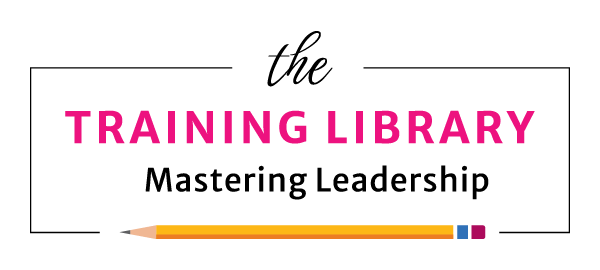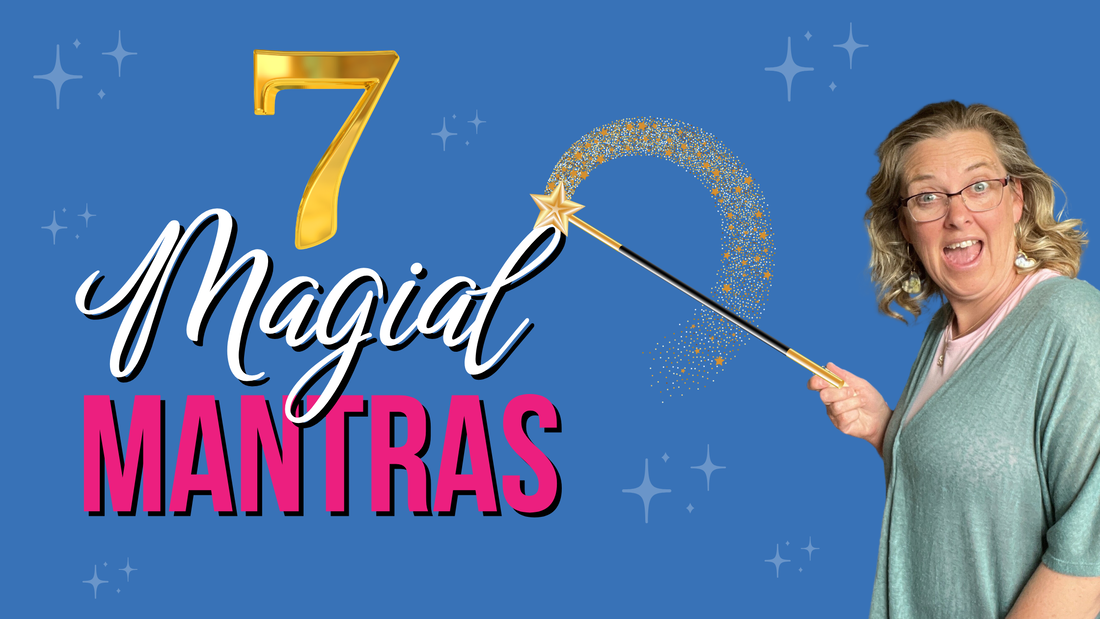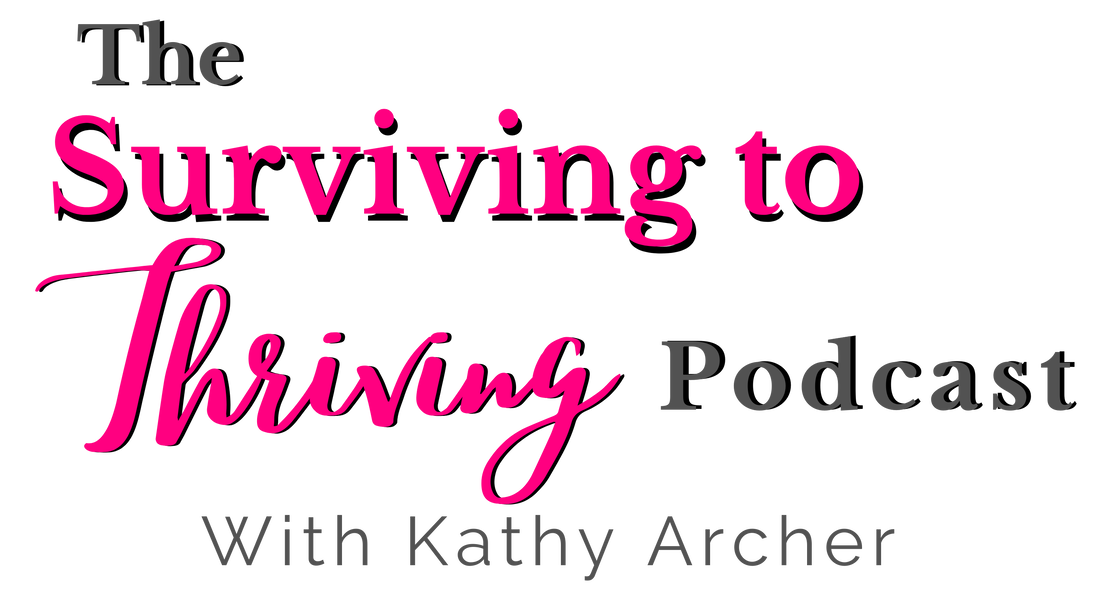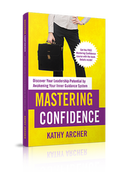Understanding Pre-Meeting AnxietyIf you are a nonprofit leader and have a tough meeting coming up, you will want to feel empowered going into it. Tune into Sandra's story to build your confidence going into challenging conversations! Sandra's Story: Facing the Fear of a Tough MeetingWhen Sandra came to our coaching call, she was preparing for a meeting with the Executive Director about her performance. Sandra was dreading the meeting. She knew her boss would make her feel stupid, small and even scared.
But that's not how Sandra anticipated the meeting was really going to go down! Sandra knew she would feel attacked by her bossSandra knows that "help" from her boss is typically in the form of them pointing out:
Sandra's anxious thoughts were almost out of controlEver since Sandra's boss had scheduled the meeting, Sandra had been rolling around the worst-case scenario in her mind. She imagined being fired on the spot, being raked over the coals and being belittled, berated and bullied. Hence, the knot in her stomach! Sandra had a history of not feeling supported by her bossIt's no wonder Sandra was dreading the meeting! Past meetings had not gone well. Most of what Sandra feared had happened in the past.
It was time for Sandra to change her perspectiveJust because that is how Sandra's ED has communicated in the past does not mean that Sandra has to believe it means she is incompetent or not cut out for leadership. Sandra can choose to pick between the well-intentioned but still hurtful comments and find out what's valuable in between those comments. Sandra took back control of her thoughtsWhether it is this conversation with her boss or another, Sandra gets to decide how she will proactively continue to grow and develop in her nonprofit leadership role. Shifting Your Mindset for ConfidenceSandra enlists the support of her nonprofit coachSandra brought this upcoming conversation to our coaching call. In past coaching sessions, we'd already talked about mindsets, perspectives and lenses, so she knew her mindset mattered most! To plan to feel more confident in the upcoming conversation, we took a look at the kinds of messages Sandra's boss might share:
The Power of Perspective: Changing Your MindsetLeadership MINDSET # 1If Sandra chose to see herself as flawed, she would take these kinds of comments to heart. Imposter Syndrome would take over, and the knot in her stomach would grow to a tightening in her chest. Sandra could see how her thoughts could snowball:
Leadership MINDSET #2 (THE BETTER OPTION)I invited Sandra to PAUSE, and take a breath. I asked what might happen if she chose to hear the messages differently. Sandra PONDERed and considered the comments above and then what else might be true:
Mindset # 2 helps Sandra feel more confidentSandra then used curiosity to PIVOT to new thoughts:
Instead of feeling beaten down by taking time to move through the Inner Guidance Cycle, Sandra felt back in control. She was ready to take the core of the feedback (too much overtime) and hear it for what it is—Feedback. Believing in Your Potential: The Foundation of ConfidenceHow does this help Sandra remove the knot in her stomach before the meeting?By knowing she has control of her thoughts, choosing how to hear messages and intentionally choosing not to take things personally in the meeting but focus on the content, Sandra lessened the emotional charge going into the meeting. When Sandra chooses her thoughts, she feels her confidence soar!I reminded Sandra that feeling confident in a meeting isn't about what someone else says or thinks. Sandra smiled and nodded. She's been reading Mastering Confidence. I know, she said, it's what I believe. How confident you FEEL starts with what you BELIEVE.What you believe about yourself is what matters most. I asked Sandra:
I reminded Sandra that if she believes those things, the tone with which her boss shares those messages in that meeting is less relevant than the content and what she chooses to hear, believe and take action on. Creating an If/Then Plan for ComposurePreparing for Triggers: Sandra's If/Then StrategyWhile feeling more confident, Sandra was still worried about being triggered and losing composure in the meeting. Sandra wanted to prepare to stay composed in her talk with her ED. She'd recently reviewed the webinar: How to Prepare for a Tough Talk so you can handle it with integrity in The Training Library. She'd learned the power of being prepared for getting triggered with If/Then plans. She asked if I could help her prepare an If/Then plan in case she got triggered. Sandra already knew what kind of comments might trigger her and cause her to lose her composure.
We prepared her If/Then plan and she practiced saying her response.
Now, the knots have turned to butterfliesSandra was still nervous but felt way more confident and in control of her responses! She messaged me later and said the meeting was still hard, but she left feeling in control of herself, her responses and her future. What's Next? Taking Charge of Your Leadership JourneyWill you do what Sandra did? If you want to ditch the knot in your stomach before your next uncomfortable meeting, then you need to get ahold of your thoughts and emotions before you go into the meeting. You need to create a mindset that allows you to take back power, your personal power. That way, you will be able to respond in a way that makes you feel empowered, and you'll be able to handle your meeting more confidently, too! ❗️❗️VERY IMPORTANT NOTE❗️❗️
I am not condoning bullying or harassing behaviour. If that happens, you must decide how to address it, find mental health support, and/or change jobs. There is no one-size-fits-all plan for how you will deal with it. Just know that you have options if your workplace is not psychologically safe. Check your policy manual for direction on what to do within your organization. Online resources
You may also find these podcast episodes helpful.
0 Comments
If you are like most leaders, you've been here: You have a precious break in the day, so you look at your endless to-do list. All tasks seem important, but you scan the list, looking for the priority items you can knock off in a few minutes. As you glance at each item, you make a mental note:
Your to-do list is like an emotional roller coaster In the time it takes to scan down the list, your emotions move from overwhelmed to anxious, then annoyed and doubtful, ending with discouraged. Pushing the to-do list aside, you begin scrolling through your inbox without realizing you've avoided doing anything on the list and, as a result, get further behind and more disheartened 😩 I get it. I've been there many, many times too! In fact, if you are like most leaders, you have a lengthy to-do list that haunts you into the wee hours of the morning and, honestly, will never get done. But why is it that we will never get through our to-do list? 💥The reason your to-do list will never get done is twofold REASON # 1 First, it's a disorganized list that is more of a holding place than a completion place.
REASON # 2 Second, we look at the list as items that need time to be completed, and we blame lack of time as the enemy 😡 ⏰ It's way more complicated than just not enough time. For example, look at your to-do list and consider:
Without taking all of that into consideration, our to-do list becomes an impossible challenge, and time becomes the enemy. But time is getting a bad rap. ❌ It's not ⏳ time's fault. The time available to complete tasks is only one small factor in managing our to-do list. There are other things to consider. Below are three steps to help you manage your to-do list with much greater success👇🏻 QUESTION: How do I get done, what matters on my to-do list? ANSWER: You create order and awareness. 1) First, start by prioritizing your to-do list into some semblance of order That way, your to-do list can become a tool working for you instead of a threat against you. 2) Next, let go of inappropriate expectations of your to-do list You change expectations of your to-do list by shifting your mindset from believing your to-do list is a list of things that need doing to a holding place for projects and tasks.
3) Finally, move a few key items to each day's agenda, plan or priorities When you only have three things to get done each day, you will check them off with greater speed and satisfaction.
But we are still overlooking something That covers the tactical side of getting through your to-do list. But there is something bigger that needs addressing. 🐘 The elephant in the room is the emotions you felt when you scanned the list.
Your emotions play a big role in productivity Many of us are unaware of our feelings, let alone how our emotions affect our productivity. We can choose our responses better by slowing down and getting a better awareness of what we are experiencing and how our emotions distract us from getting done what matters most. If you want more help with this, read this next: Why Your Emotions Are Sabotaging Your Productivity If you've been meaning to
NOW is the time to plan HOW you will do that 👆🏻 growth.
As women leaders in nonprofit organizations, you often find yourself needing to navigate a challenging conversation. Whether addressing policy violations or managing performance issues, these discussions tend to evoke much 😩 angst and worry over how they will go.
It's your job to have difficult conversations But having difficult conversations is part of being a leader. The problem is that often when we think about these upcoming exchanges, we're trying to figure out how to have that conversation without thinking about the how. 👈🏻Yes, reread that sentence. As we rehearse an upcoming conversation in our heads, we are trying to figure out WHAT to say rather than HOW to say it. But you are missing a key component of preparations for these conversations We meticulously plan our arguments, gather evidence, and outline our case. To prepare, you:
We think less about HOW we will engage, connect, influence, impact, listen, hear, and understand. Understanding. That's a good place to start. When we engage in a difficult conversation, we seek to be understood rather than to understand. So we gather the information but try to shut off who we are. We want to be DETACHED in tough conversations I often hear women say I'm just going to go in, be clear, non-emotional, or detached. But what they're really doing is going into a conversation with lots of emotions. 😤 😡 😣They are annoyed, irritated, frustrated, and trying to pretend that they're not. Yet, when I ask my clients what happens when they are annoyed, irritated, or frustrated, they tell me things like:
🙈 And although they know they can't hide all these things, they hope the other person doesn't notice. But they are only kidding themselves. Deep down, you know that others probably pick up on it even when you pretend you aren't annoyed, irritated or frustrated. You need to manage your emotions so you can engage in the conversation The truth is emotions will arise during difficult conversations. As much as we might try to conceal them, our nonverbal cues and internal experiences can be telling. Rather than suppressing or denying these emotions, you need to acknowledge and address your emotions to deal with a challenging conversation confidently. 🤔 Before the conversation:
My client experienced an ah ha A client told me she wanted to stop being so passionate in conversations. I asked her how passion shows up during a conversation. When she's passionate, my client said she talks a lot, talks fast and gives lots of details. 🟦 I want to stop being passionate I suggested that instead of shutting the passion off that, she manage the passion and focus on being clear and concise in her message and then pausing, allowing the other person time to soak it and respond. Passion isn't the issue. That is, in fact, what we are looking for👇🏻 🟦 Oh wait...I do want to be passionate If I asked you how you want to feel about your job, you might tell me you want to feel engaged, excited, and eager to be there. Wouldn't you say that's passion? So when the behaviour of someone on your team is negatively impacting a client, why wouldn't you be passionate? ✅ It's how you use that passion that's important. 🟦 Ah, I have to learn to manage my passion When my client realized this, she was very intrigued. She does care deeply about the work she and her team are doing. It's no wonder she's passionate. 🌱 Learning to manage it rather than shutting it off is her place for growth! You need to choose the emotions you want to bring into the conversation When you prepare ahead of time, you'll approach the discussion with greater clarity, empathy, and control, paving the way for a more productive dialogue. Remember, the way we approach the conversation has a profound impact on its outcome. Difficult conversations are more effective when we focus less on content and more on the connection. The best way to do that is to let go of being right and understood and instead become curious and seek to understand. Often, our natural inclination during difficult conversations is to seek to be understood. We aim to get our point across, make our case, and ensure our perspective is acknowledged. However, a shift in mindset is necessary for building strong, trusting relationships with your employees. Instead of solely focusing on being understood, cultivate a genuine curiosity to understand the other person's viewpoint. Doing so creates an environment that encourages openness, empathy, and collaboration. Seven Mantras to Help You Through Tough Conversations 1️⃣ Curiosity is critical
2️⃣ Emotions are everything
3️⃣ Pause before you proceed
4️⃣ Connect before you continue.
5️⃣ Put the relationship before the responsibility
6️⃣ It's not just about the content; it's about the connection
7️⃣ The inner work is the work!
Your focus needs to be on WHO you will be while you are talking about the WHAT When you prepare for difficult conversations, remember that the strength of your connection is the key part. By focusing on the type of person you are in those conversations, you can create a safe space that promotes understanding, collaboration, and growth. Remember, it's not just about the content; it's about the connection. 📗 If you need help, read this: You may want some help to learn to dig deep and focus on how to have a conversation rather than what you will discuss if the conversation takes some work. Fellow coach Michael Bangay, Stanier recently published his latest book, How to Work with Almost Anyone. In it, you will learn five questions for building possible relationships with some of those people you aren't sure you will ever get along with. I highly recommend that you grab it and do the work to focus on how to have conversations, not just the content of the conversations. When you do, it will be incredible peace to help you manage your emotions and increase your emotional intelligence while having those conversations with difficult people. p.s. The inner work IS the work! Where will you start today to grow yourself from the inside out? Nonprofit leaders and the people who make the organizations hum have a deep desire to impact the world positively. Creating an engaging workplace, or what my colleague and I call a Magnetic Workplace, is essential to have that impact. An engaging workplace exudes magnetic qualities. It is a workplace that fosters growth, openness, belonging, generativity, and creativity among its people. This type of workplace inspires individuals to contribute to something larger than themselves, instilling a sense of purpose and meaning in their work. At a magnetic workplace, employees know that they matter and feel cared for, which creates an environment that draws people in and fills them with energy. I introduced you to The Infinite Leadership Loop to create a Magnetic Workplace. The Infinite Leadership Loop is an infinity loop, is a continuous process of moving back and forth between, on the right-hand side, turning inwards in self-reflection and on the left-hand side, engaging with your team. The loop has the four components of the Inner Guidance Cycle on the right; pause, ponder, pivot and proceed. A 5th point, people, is on the left. To develop yourself and your team using The Infinite Leadership Loop, you will need to deliberately build a habit of purposefully ebbing and flowing between being self-reflective and engaging with the people around you. To do that, the following four building blocks of The Infinite Leadership Loop will help you.
🟨 Building Block # 1 - Curiosity is Critical The first building block towards a Magnetic Workplace is curiosity. In Magnetic Workplaces, people are openly curious about improving their impactful work, sharing their ideas and collaborating on innovative approaches.
Curiosity allows for reflection, new perspectives, and the courage to act and engage with your team. It helps to create a magnetic work environment that draws people in. When you learn to be more curious, so does your team. TIP to help you be more curious
Creating Comfortable Coaching Conversations 🟨 Building Block # 2 - Inner Work is Imperative Magnetic Workplaces prioritize the inner work of their leaders and their team members by giving them time, space, and freedom to think and reflect. This time for "inner work" allows them to think strategically, make effective decisions and improve their emotional intelligence. In most organizations, leaders and team members are constantly busy, running from one meeting to the next and dealing with crises and fires all day. To create a magnetic work environment, distractions and interruptions must be intentionally reduced, and time must be deliberately created to reflect, process, and resolve issues. Scheduling time to pause, prioritize, and proactively plan a way forward for everyone on the team is essential to improve decision-making and foster an environment of growth and development. TIP to help you make space for more inner work
📚 Resources to Help: The Pause Principle by Kevin Cashman Leadership from the Inside Out by Kevin Cashman 🟨 Building Block # 3 - Vulnerability is Vital Magnetic Workplaces encourage vulnerability because trust is grown by being open, honest and vulnerable with each other. Vulnerability is also critical for you to engage in the inner work of The Inner Guidance Cycle. It's hard to look at what triggered you, why and how you will deal with it differently without being vulnerable with yourself. Start by learning what vulnerability is (courage) and what it isn't (weakness). Then, role model courage and vulnerability. When you do, you'll create more of that sense of trust and the understanding, respect, kindness, and compassion required to develop a magnetic work environment. Tip for learning to be vulnerable Make a list of leaders you admire and what you admire about them. Look at that list for places where they demonstrate vulnerability. Use these as your role models for doing it yourself. Another great place to start is to identify and speak to your values. The Values Verification course in The Training Library helps you put voice and action to the value words you identify. 📚 Resources to Help: Daring Greatly by Brene Brown The Boy, The Mole and The Fox by Charlie Mackesy 🟨 Building Block # 4 - Movement is Mandatory Building a Magnetic Workplace requires movement and growth. These elements are necessary to create and sustain a workplace where team members feel safe to be curious, take time to do the inner work and then do the impactful work that moves their nonprofit forward. Leaders must break out of this pattern of holding on to old ways and resisting change. It's essential for leaders themselves and their people to move outside their comfort zones. Leaders must model this behaviour and create an environment where people feel safe to try, flounder and sometimes fail. Tip for learning to move into action, even when it's scary Move. Get up and move. Go for a walk or move around your office or house. Movement in your body creates movement in your mind; sometimes, that is exactly what we need to move into action with our team. Having a plan also helps you move. When you know the steps, it's easier to take them. To help you with that, try this webinar in The Training Library: How to Prepare for a Tough Talk. 📚 Resources to Help: Leadership and Self-Deception by The Arbinger Institute The Confidence Gap: A Guide to overcoming fear and Self-doubt by Russ Harris Your next steps You must create an engaging workplace to have the positive impact you desire in your workplace. An engaging workplace, also called a Magnetic Workplace, fosters growth, openness, belonging, generativity, and creativity among employees, inspiring them to contribute to something larger than themselves. You'll do that when you put The Infinite Leadership Loop into action. The continuous process of moving back and forth between self-reflection and engaging with the team helps you to process what's going on inside of you so that you can be your best self in your leadership role. Remember though:
As a Nonprofit Leader, you likely want to build and sustain a team that continues to make a difference. However, finding the time, energy, and focus to make that happen can be challenging. Being overworked, overloaded, and overwhelmed may lead to burnout and keep you in survival mode. Staying stuck in survival mode, if you aren't careful, can taint your workplace energy and create disengaged teams and toxic work environments. But there is another way. Keep reading to discover a model you can use to become a leader who creates an engaged team of difference-makers! What we don't want: Leaders and organizations DO NOT WANT uninvolved, unenthusiastic, uncommitted, and disengaged team members that contribute to a toxic work environment. What we do want: Leaders and organizations DO WANT engaged teams that are involved in, enthusiastic about, and committed to their workplace, which is how Gallup defines engagement. The way forward: For leaders and organizations to increase engagement and build a team of involved, enthusiastic, and committed employees, you need a system, processes and habits of interacting that will help you get there. Let's learn the framework to help you create that way of leading. Your individual path is connected to the organizational path Learning how to move from surviving to thriving as an individual leader is important to understand how you can impact your organizational culture. This blog teaches you how to move along the surviving to thriving continuum. Let me summarize the continuum here. On the left, survival mode is characterized by fear. You are always afraid of falling apart, dropping the ball or losing it emotionally. You are barely hanging on, just getting by or just trying to stay alive. The opposite, thriving mode, is characterized by energy, enthusiasm and engagement. You bloom and flourish as you learn new things, take on engaging projects, and have strong, developed working relationships that allow you to do your work purposefully. Most of us hang out in the middle, coping. Here you are doing more than barely getting by, but you're not feeling so alive that you want to yell from the mountaintops about how much you love your job. This middle ground is where the idea of being on a hampster wheel fits: round and round you go. Surviving, coping and thriving are all places you "live" in individually. They may overlap, though, with your workplace culture and thus your workplace continuum also. So, first, let's review what workplace culture is. Your Workplace Culture Your workplace and every other workplace has a specific culture - a feel to it, an impression it leaves. Each workplace has a certain intangible quality that makes something about it distinct and decidedly different but difficult to define or describe. You know whether you like it or not, want to be there or run away quickly. The Points on a Workplace Continuum My colleague Bill Scott and I developed a workplace culture continuum that stretches from toxic to magnetic. In the middle is the place that most of us are far too familiar with - a tolerable workplace. As you read the following explanations of each of the points on the continuum, we expect you'll know if that "feels" like your workplace or not. Toxic A toxic workplace sucks the energy out of its people. A toxic workplace is characterized by:
A toxic workplace is unhealthy and destroys individuals and team connections. In a TOXIC workplace, employees are actively disengaged. Tolerable A tolerable workplace is not bad enough to leave, not good enough to give it your all. A tolerable workplace is characterized by the following:
In a tolerable workplace, people have tolerated far too much for far too long. In a TOLERABLE workplace, employees are not engaged. Magnetic A Magnetic Workplace draws its people in; they know they matter and feel cared about. A magnetic workplace is characterized by the following:
In a magnetic workplace, people contribute to something bigger than themselves. Magnetic Workplaces draw people to them and fill them with energy! In a MAGNETIC workplace, employees are actively engaged. It's not a static point you are at There are more than three points on a continuum. In fact, there are an infinite number of points. As a result, many of us simultaneously find elements of toxic, tolerable and magnetic experiences in our workplaces. It can shift depending on the day, the day's agenda, your work location, and who you are interacting with. Creating a Magnetic Workplace Imagine being in a workplace where people feel an irresistible pull to be at work because of some strong positive vibe, energy or even magnetism. Bill and I know that's possible because we've seen it happen. When you create magnetic teams with involved, enthusiastic and committed employees, you will lead a magnetic workplace that attracts good employees and keeps them around long-term. So how do you do that? By becoming a thriving leader. Thriving leader to magnetic workplace To become a thriving leader, you've learned to use The Inner Guidance Cycle to take time for self-reflection to be a more intentional leader. But it doesn't end there. You can't "stay in your head" to lead. After thinking, reflecting and sometimes making decisions, you'll need to reengage. Reengaging is about engaging with the people you work with, your community and your family. Thus, another cycle links with The Inner Guidance Cycle creating a new model. The Infinite Leadership Loop Bill and I developed a model where there a continuous process of moving back and forth between turning inwards in self-reflection and engaging with your team. Both model components use curiosity as fuel for continued learning, resulting in an engaged workplace. I call this model The Infinite Leadership Loop. Think of this model as the infinity loop. The loop, with the 4 components of the Inner Guidance Cycle on the right, pause, ponder, pivot and proceed, and the 5th point, people on the left, demonstrate the ebb and flow between self-reflection and engagement with others. Putting the The Infinite Leadership Loop into action, we move consciously back and forth from our inner thoughts to our external connections. When we do this more consciously, intentionally and deliberately, we move individually from surviving to thriving and our organization from toxic to magnetic. Be an intentional leader Take time today and every day to pause, intentionally going within and ponder and then engage with your people more consciously. The more intention you put into who you are and how you show up, the more authentic you'll feel and the bigger impact you'll have! |

Available on Amazon
Archives
May 2024
|
|
Leadership TRAINING for Nonprofit Leaders
Become a confident and competent nonprofit Leader: Join The Training Library membership Executive and Leadership COACHING Leadership Coaching for Nonprofit Executives, Leaders and ManagerCoaching |
PODCAST for Nonprofit Leaders
The Surviving to Thriving podcast: Strategies, systems and support to lead your nonprofit with confidence FREE RESOURCES to Grow your Leadership Skills Free Leadership Training Resources, Worksheets and Templates |
Become a CONFIDENT LEADER
|











 RSS Feed
RSS Feed
